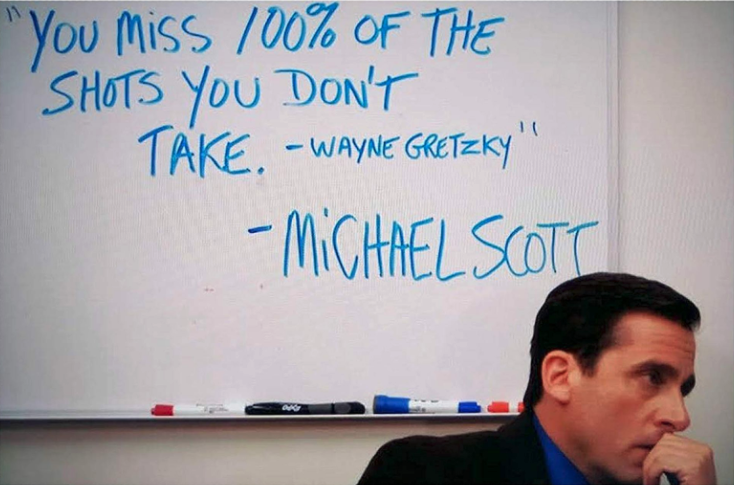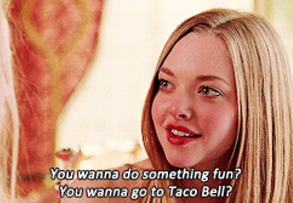How to start a club
Meet people. Have fun. Save the world.

The thing about adulthood is that no one is coming to save you. So if you want to make more friends, you have to make more friends. The recipe = this blog post. The raw ingredients = people. (File under “metaphors that imply cannibalism if you think too hard”…) You clicked on this guide because you want to create a social group, whether IRL or online. Good news first: People inherently want to hang out with other people. They are mainly blocked by:
- Fear
- Lack of convenient Schelling points around which to coordinate
- Random life stress or personal problems
We can’t do anything about #3 so we’ll ignore that category of blocker.
Your job is to 1) conquer your own fear and 2) create Schelling points and advertise them to suitable prospects. That’s all you have to do. If you want to create some kind of programming for the group to enjoy, cool, but don’t feel like it’s required. (And if you don't know what a Schelling point is, no worries, I'll explain momentarily.)
The fear: If you put yourself out there and organize events, you might get rejected. What if nobody shows up?! Maybe you’ll invite someone you care about a lot and they’ll blow you off. Honestly, yeah, those dreaded outcomes might happen. The trick is to radically accept the possibility of rejection or “failure.” Which does not eliminate the pain if failure happens, but does enable you to move forward anyway. Because:

Be brave. Do it scared. Plan for how you’ll react to zero or low attendance, but don’t dwell. What if things go great? Your meetup dreams are worth pursuing because friends are awesome, and the motivating power of hope is worth occasional disappointment.
The lack of convenient Schelling points: “In game theory, a focal point (or Schelling point) is a solution that people tend to choose by default in the absence of communication in order to avoid coordination failure.” In other words, the obvious thing to do, like a sitcom coffee shop where the main characters always find each other eating BLTs.
Why are social Schelling points necessary? Because people are lazy, or, more charitably, busy with other demands on their energy. Managing meetup logistics is work they’re not getting paid for, and don’t feel particularly comfortable or confident doing. The dynamic is reminiscent of the rule of thumb that 90% of social media users just lurk and scroll, while 9% comment or respond to others’ posts, and just 1% create original content. Be the 1%!
You, dear reader, are not so afraid that you won’t try, and you’re willing to do a bit of work to create a Schelling point. So what are the steps to follow? Let’s review the Five Ws — who, what, when, where, why — and the equally important Singular H: how.
Who do you want to invite?
You probably already have a target audience in mind based on shared interests. Like if you want to start a knitting club, obviously you’re looking for people who knit — close to your area for an in-person group, or schedule-compatible if online. Think about the demographic tendencies of the people you want and extrapolate where you’re likely to find them. Knitters are mostly but not exclusively women, often visit craft stores for yarn, post Instagram stories about what they’re watching on Netflix while they work on their latest projects, etc.
You must consider: 1) Are there enough of these people near me? 2) Can I reach them?
“Enough people” is fairly self-explanatory and comes down to a judgment call regarding the local density of your target audience. Reaching them consists of putting in the legwork.
First, tap your social network by inviting friends and acquaintances who might be interested, and ask them to invite anyone else they know who also might be interested. (If you don’t have an existing social network, back up and start there. Attend other people’s groups or events and make connections.)
Next, spread the word far and wide, but in a targeted fashion. Post it online — social media, relevant subreddits, NextDoor, local Facebook groups or town-focused Instagram accounts, etc. Make fliers and put them up in places your target audience is likely to frequent.
What about Meetup.com, isn't that a thing? Yes and no. The tea is, a while back Meetup decided to start charging organizers to use the platform — fair enough, Meetup is a business and needs revenue. Unfortunately, that move dealt a blow to general hobby activity on Meetup. If it's still seeing a decent amount of use in your area and you don't mind the pricing, go for it. Eventbrite doesn't charge for free events, so that's worth checking out as well.
Okay wait, I’m getting ahead of myself.
What are you going to do?
This doesn’t have to be complicated. The answer can just be “sit around and talk,” ideally at a location with drinks and snacks. But if that doesn’t feel sufficient, you can…
- Choose a theme: Knitting for summer
- Do hobby-related show and tell: Favorite knitting gear
- Have a stash-busting exchange: Bring a skein, leave a skein
- Give a presentation or demonstration: Techniques for sturdy socks
Be aware that a specific agenda can negatively affect attendance if the subtopic is too niche. You might be fine with that but it’s something to keep in mind.
When and where will you gather?
When: Not to, like, completely state the obvious, but pick a time when your people will be available. The right choice is different for college students versus stay-at-home parents of toddlers versus 9-5 office workers. Again, consider the demographics you’re working with. If you’re trying to set something up for a preexisting group, it doesn’t hurt to ask members what their schedules generally look like. However, trying to find a specific date that works for everyone is a fool’s errand. There will always be someone with a conflicting commitment. Just choose what works for you. Where, IRL: The ideal meetup venue…
- is relatively quiet and not too crowded (but not empty either),
- has large tables,
- serves both alcoholic and non-alcoholic drinks,
- as well as appetizers or “small bites”-type food.
Coffee shops and beer gardens often satisfy these criteria. But work with what you’ve got! Church halls, community centers, parks when the weather is nice, somebody’s house… these are all options. Call or email and ask. If refreshments aren’t integrated into the venue, swing by a grocery store for supplies and/or encourage attendees to bring something to share.
Here’s where you should keep in mind what you’ll do if no one shows up. Will you enjoy hanging out there by yourself? Or if that’s a mood-killer, is there somewhere else nearby that would be fun to go?

Where, online: Zoom, Google Meet, and Discord are the go-to choices.
Why should anyone show up?
There are various different types of meetups — educational, professional development, networking, hobby-focused, etc. I contend that whatever the ostensible focus of the group, the actual point is just to talk to other people. This even applies to industry conferences. The official talks are there so you can expense going out for drinks at night.
You know the saying, "People don't remember what you said, they remember how you made them feel"? Yeah. That. It's your job as the host to make people feel good. Be enthusiastic and attentive, ask questions and follow-up questions, introduce people to each other. Brainstorm a few good conversation topics in advance. If this feels awkward, you just gotta fake it till you make it and brute-force your way into being charming.
How to host a meetup, the checklist
This is a worksheet — fill it out and you'll be 50% of the way to a fully planned event!
- Who is the target audience?
- Find them online:
- social media — local Facebook groups and Instagram accounts, NextDoor
- local blogs or community news outlets
- Meetup.com (if relevant in your area)
- Eventbrite (if relevant in your area)
- Reddit (if you live in a big city or metro area)
- Find them in person:
- local cafes and bars, hobby stores, gyms, churches, libraries, community centers — anywhere that might have a bulletin board
- telephone poles in high-traffic areas
- INVITE YOUR FRIENDS and tell them to invite their friends
- Date and time?
- Location?
- Theme / activity?
- Day-of:
- Refreshments (if not part of the venue)
- Name tags + markers
- Conversation starters / topics
- Signup sheet on a clipboard + pen (if you haven't already gathered emails through online outreach)
Your club needs a newsletter
We've been talking about planning your first meetup, but I assume you don't want to do just one. You want to create an ongoing community of people who enjoy spending time together. A newsletter is the simplest, most reliable way to keep a group going, especially if you don't want to depend on social media algorithms, which are fickle at the best of times.
It really is so simple. Collect emails from members, then send a newsletter a couple weeks in advance of every gathering (or whatever makes sense for your cadence). A regular schedule will also help, if that works for you as the host, but if it doesn't that's not a dealbreaker. But not being able to reach your members would be a dealbreaker, and that's where a newsletter comes in handy.
Buttondown makes it super easy to get started, and your first 100 subscribers are free.